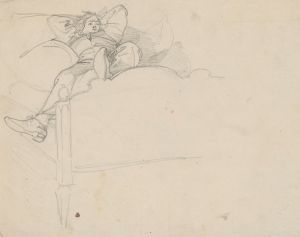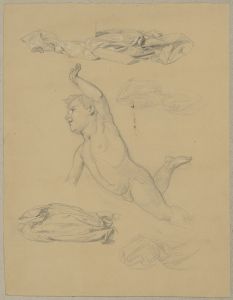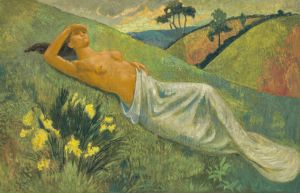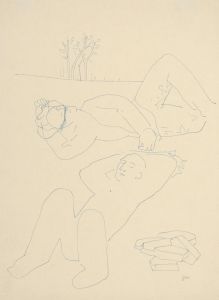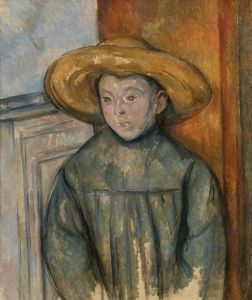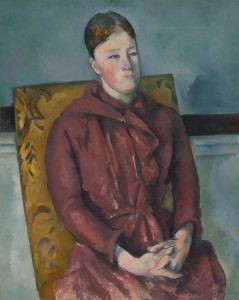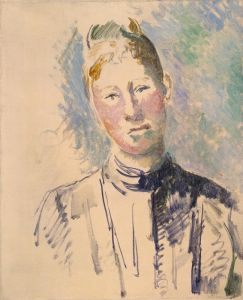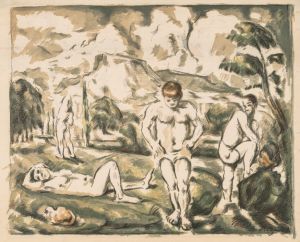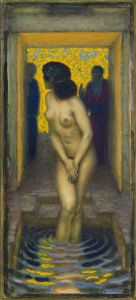
Study of Puget’s ‘Hercules Resting’
A hand-painted replica of Paul Cézanne’s masterpiece Study of Puget’s ‘Hercules Resting’, meticulously crafted by professional artists to capture the true essence of the original. Each piece is created with museum-quality canvas and rare mineral pigments, carefully painted by experienced artists with delicate brushstrokes and rich, layered colors to perfectly recreate the texture of the original artwork. Unlike machine-printed reproductions, this hand-painted version brings the painting to life, infused with the artist’s emotions and skill in every stroke. Whether for personal collection or home decoration, it instantly elevates the artistic atmosphere of any space.
Paul Cézanne's "Study of Puget’s ‘Hercules Resting’" is an intriguing work that reflects the artist's engagement with classical themes and his unique approach to form and composition. Created in the late 19th century, this painting is part of Cézanne's broader exploration of traditional subjects through a modern lens, which would eventually lay the groundwork for the development of modern art.
Cézanne was known for his methodical approach to painting, often revisiting classical themes and subjects to explore their structural and compositional possibilities. In "Study of Puget’s ‘Hercules Resting’," Cézanne draws inspiration from the work of Pierre Puget, a 17th-century French sculptor renowned for his dynamic and expressive Baroque sculptures. Puget's depiction of Hercules, a figure from Greek and Roman mythology known for his strength and heroic feats, serves as the basis for Cézanne's study.
The painting captures Hercules in a moment of repose, a theme that Puget had explored in his own work. Cézanne's interpretation, however, is distinct in its execution. While Puget's sculptures are characterized by their dramatic movement and intricate detail, Cézanne's study emphasizes form and structure over detail. The painting showcases Cézanne's interest in the underlying geometric shapes that compose the human figure, a hallmark of his style that would later influence the Cubists.
Cézanne's brushwork in this study is deliberate and methodical, with a focus on the interplay of light and shadow to define the muscular form of Hercules. The use of color is restrained yet effective, highlighting the contours and volume of the figure. This approach reflects Cézanne's belief in the importance of capturing the essence of the subject through careful observation and a deep understanding of its form.
The painting also exemplifies Cézanne's departure from the traditional techniques of his predecessors. Rather than striving for a realistic representation, Cézanne seeks to convey the solidity and permanence of the figure through a series of carefully constructed planes and facets. This technique would become a defining characteristic of his work and a significant influence on the development of modern art movements such as Cubism and Fauvism.
"Study of Puget’s ‘Hercules Resting’" is a testament to Cézanne's ability to bridge the gap between classical art and modern abstraction. By reinterpreting a classical subject through his unique perspective, Cézanne not only pays homage to the artistic traditions of the past but also paves the way for future innovations in art. His work challenges viewers to reconsider the relationship between form and representation, encouraging a deeper appreciation for the complexities of visual perception.
In summary, Paul Cézanne's "Study of Puget’s ‘Hercules Resting’" is a significant work that highlights the artist's engagement with classical themes and his innovative approach to painting. Through his study of Puget's sculpture, Cézanne explores the possibilities of form and composition, ultimately contributing to the evolution of modern art.





